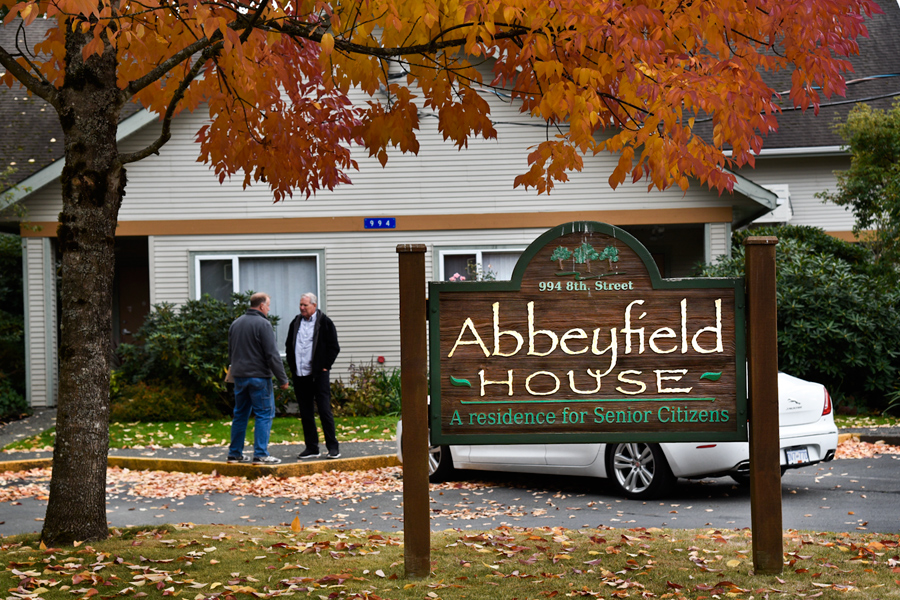
Abbeyfield closure highlights seniors housing issues
They come here to retire. They come from across Canada, the United States and other countries. They come for the Comox Valley’s moderate climate and spectacular landscape.
They come, they stay and they age. And so the Comox Valley’s population has aged at a rate nearly double the provincial average.
Within the next 20 years, the Valley’s population of people 75 years old and older is predicted to double. People over the age of 65 already comprise almost a third of the Valley’s total population, and it will continue to be the region’s fastest growing age group.
They come because the Comox Valley is well-known as one Vancouver Island’s best places to retire.
But it’s less well-known that as a result of this increasing elder population, the Comox Valley has become a not-so-great place to grow old.
Especially for those of modest wealth.
 If you can afford them, and find a vacancy, the Comox Valley appears to be awash in private seniors independent- and assisted-living facilities. Most are full and have long waiting lists, and new units sometimes sell out before construction begins.
If you can afford them, and find a vacancy, the Comox Valley appears to be awash in private seniors independent- and assisted-living facilities. Most are full and have long waiting lists, and new units sometimes sell out before construction begins.
But for seniors surviving at the lower end of the income scale, and those who need government assistance, there are fewer choices.
That’s why the recent closure of Abbeyfield House in Courtenay, which displaced 10 senior citizens from their independent living home, has created such a community uproar.
Abbeyfield House
The backstory of Abbeyfield’s closure reveals the root problem: There is a dearth of residential care beds and affordable seniors housing in the Comox Valley.
The province’s 12 Abbeyfield Houses are designed for lower income seniors and those who prefer a smaller facility. The houses, including six on Vancouver Island, provide affordable housing for people over the age of 55 who are capable of living independently, but want a “supportive domestic atmosphere (that) provides companionship and freedom from worries and chores.”
As Abbeyfield residents age and their health declines, and they can no longer live independently, it is expected they will move to more appropriate residential care facilities. Then Abbeyfield Houses can make room for independent seniors on their waiting lists. The Courtenay Abbeyfield House had more than 30 eligible seniors on its wait list.
Except there haven’t been any available beds in residential care or similar affordable housing facilities in the Comox Valley. And none of the Abbeyfield tenants wanted to move. They were content with the excellent “at home” care provided by Island Health’s home care program, which it would have continued to do if Abbeyfield had remained open.
When Abbeyfield closed last week, its youngest resident was 91. She should have been moved into residential care years ago, but Island Health had no where to put her. Instead, seven different Island Health professionals have been making an average of 115 visits per week to care for her and other (not all) of the Abbeyfield residents.
Many 91-year-olds do live in the community, however, some with support and some who can still manage independently. Age is not always an indicator of need for residential care.
Island Health told Decafnation that it supported Abbeyfield tenants to continue living in the community — as they do with any person who chooses to remain as independent as possible and who needs support.
But because the Comox Valley lacks sufficient residential care beds to meet growing demand, Abbeyfield had become a hybrid type of care facility to which it didn’t aspire or could afford.
The story of one Abbeyfield resident illustrates how ridiculous the situation had become.
An elderly woman resident suddenly required acute hospital care. The hospital treated her and then sent her back to Abbeyfield on a stretcher. She was bed-ridden. Abbeyfield sent her back to the hospital, which refused her and she landed back in Abbeyfield with Island Health workers providing the care she should have been getting in a long-term residential facility.
One Abbeyfield resident suffering from dementia has occasionally wandered off the premises, requiring the House Coordinator to find and rescue her. But the House Coordinator’s job is only to prepare meals and to do other household chores. There is no overnight supervision at Abbeyfield Houses.
When Abbeyfield closed its doors, Island Health was forced to find placements within the Valley for the tenants, which created a momentary housing crisis. Other people, who desperately needed beds and had waited patiently on the waitlist, were bumped — or triaged — to accommodate the soon to be homeless Abbeyfield tenants.
Placement in publicly-funded residential care is based on several factors, according to Island Health, including urgency and need, and the type of bed and geographical area selected. It is not a first-come, first-serve system.
Most of the former Abbeyfield tenants are now receiving care at Casa Loma; two went to live with family and one resides in another local residential facility.
But another group of citizens, called Save Abbeyfield, believes the Abbeyfield model is still viable in the Comox Valley. And they have offered to step-in and re-open the residence.
They hope to do that before the current board sells the property or gifts it to another non-profit organization.
Jennifer Pass, one of the Save Abbeyfield contacts, said they would address the residential bed crisis in a different way.
“It is necessary to have good relationships with sponsors, and have two sponsors for every tenant,” she said. “Sponsors must be well aware, when their relative or friend moves in, that it is for “independent” seniors. If the resident gets to the point of putting other tenants at risk, and if one has not the support of Island Health in moving the person along, then it may be necessary to evict the person.
“Often a person is hospitalized and then it may be crucial to not allow the person to return to the facility (Berwick, Casa Loma, etc.) all have to deal with this situation.
“I found with my mum that a clear letter as to whose responsibility it would be if she returned to Casa Loma (an assisted living facility) and had a fall or suffered physical harm in assisted living can be very helpful if presented to hospital staff.
“Having sponsors on side is very helpful, and achieved by good lines of communication from the outset.”
Pass and Abbeyfield board chair Joan Carson could probably agree on one point:
The lack of affordable housing for seniors and a lack of residential care beds are distinct problems that became linked because Island Health looked at Abbeyfield as a safe place to park people — its tenants were getting meals and some supervision.
Regardless of whether Abbeyfield reopens, a crisis-driven method of initiating change for our elders is unacceptable. Surely the provincial Ministry of Health can do better than this.
In response to a request for comment, MLA Ronna-Rae Leonard returned the following statement:
“It must have been very stressful for the tenants and families to learn that Abbeyfield was closing. I am glad that all 10 of Abbeyfield’s tenants have been placed in new homes – this is great news.
“One of our new government’s top priorities is improving the services people count on, and we’re working hard, but 16 years of B.C. Liberal neglect can’t be fixed overnight.”
It’s a politicized comment. And disappointing that the newly-elected MLA couldn’t say she was doing something specific to assuage a growing community concern.
And the problem gets worse
Seniors who require residential care beds aren’t just plugging facilities designed for independent seniors, they are also taking up acute care beds — and acute care funding.
Chris Kelsey, chair of the St. Joseph’s General Hospital board, estimates that more than 30 percent of the community’s acute care beds are occupied by people who need an alternate level of care (ALC). In other words, there are perhaps 40-50 frail and elderly people, who do not need acute care, taking up beds at the new Comox Valley Hospital because there is nowhere more appropriate to move them.
This problem isn’t unique to the Comox Valley, but it’s more severe here.
According to a 2015 report by the B.C. Care Providers Association, “roughly 13 percent of every bed-night (province-wide) is being used by somebody who should be at another level of care.”save Abbeyfield
Acute care beds cost taxpayers between $800 to $2,000 per day, while residential care beds typically cost about $200. The BCCPA has proposed redirecting some acute care funding to the development of new long-term residential care facilities.
Kelsey said St. Joseph’s recognized this problem many years ago when it created a transition unit to park people who were previously treated as medical patients, but no longer needed that level of care. It was a controversial move at the time, but is now common among the province’s hospitals.
Is long-term care help on the way?
The scope of the Valley’s problem starts to come into focus when you consider that just 4 percent of the senior population will want or require residential care and there are already 421 residential care beds in four publicly-funded Comox Valley facilities. All of them are full and they all have waiting lists.
Island Health planned to build 70 new residential care beds in the Comox Valley, and issued a Request For Proposal last year. That many new beds would have eased the pressure on many other organizations, including Abbeyfield.
But over the summer, Island Health withdrew the proposal shortly after the change in provincial government and its decision to move the four hospice beds at St. Joseph’s General Hospital to a secular facility, along with two new hospice beds.
The 70 new residential care beds are urgently needed, and their imminent construction gave hope to elderly caregivers and also to housing providers, such as Abbeyfield House.
But the withdrawal of the RFP was crushing. Local care givers now fear a multi-year delay in bringing the new beds into service. But Island Health is more optimistic. The agency told Decafnation that the new beds should be ready for occupancy in late in 2019.
Island Health Director of Residential Services, Tim Orr, says the RFP was withdrawn due to changing requirements and community input. That included whether people would have access to Medical Assistance in Dying (MAiD) and where to locate the four existing and two new hospice beds.
But increasing the number of residential beds in the RFP was also part of the discussion. Orr said Island Health recognizes the Comox Valley’s need for more residential beds, but also for more affordable housing for independent seniors. Other communities have more of the latter.
Orr said faith-based providers, such as St. Joseph’s, are not excluded from responding to the RFP because the typical level of cognitive deficit of residential care patients excludes them from qualifying for MAiD.
One bright spot in this quagmire is the proposal to redevelop and refocus The Views, a 117-bed residential care facility operated by St. Joseph’s. They are planning a dementia village facility, perhaps with more beds, surrounded by a campus of seniors care services that might include a pharmacy and seniors daycare.
They plan to proceed regardless if they are successful in a bid for the additional residential beds contract.
About 90 percent of The Views’ residents have dementia. And while the average age of residential care patients has declined, the percentage suffering with dementia is likely to increase.
To build its vision, St. Joseph’s intends to merge with Providence Health Care in a new society not governed by the B.C. Hospital Act. Because the province does not provide funds for capital construction, the new society could borrow against its assets and future revenue.
Kelsey is confident that Island Health supports this vision, especially since Providence already plays a leading role in B.C. dementia care.
Where do we go from here?
The residential bed crisis in the Comox Valley is a complex problem. It involves medical, ethical and financial issues that won’t be solved by multiple groups asking the provincial government for a variety and sometimes conflicting resolutions.
For political and practical purposes, Victoria wants to hear The Valley speak with only one voice.
But what voice? The absence of a Comox Valley-wide co-ordinating authority has in the past led to short-term thinking and patchwork solutions on a number of different fronts — sewerage, water treatment, transportation and so on.
In order to develop a regional strategy on elderly care and seniors housing for all income levels, all the disparate Comox Valley groups must work together. That doesn’t mean everyone has to abandon their philosophical principles.
It means finding common ground, those points on which there is collective agreement, such as the urgent need to provide more residential care beds. The Comox Valley needs to speak to Victoria in a singular voice on that issue.

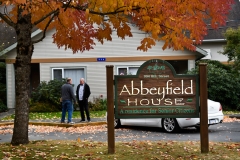

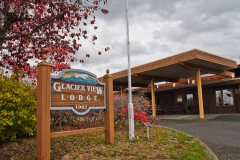
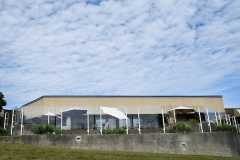
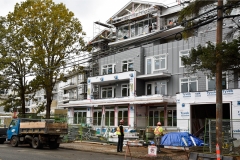


 For example, the CVRD plans to overspend on a number of patchwork sewerage system projects. It wants to build a controversial new pump station in Comox, when the CVRD’s own financial analysis shows that upgrading the Courtenay #1 pump station is the better and less expensive option. That alone could save millions of dollars.
For example, the CVRD plans to overspend on a number of patchwork sewerage system projects. It wants to build a controversial new pump station in Comox, when the CVRD’s own financial analysis shows that upgrading the Courtenay #1 pump station is the better and less expensive option. That alone could save millions of dollars.
